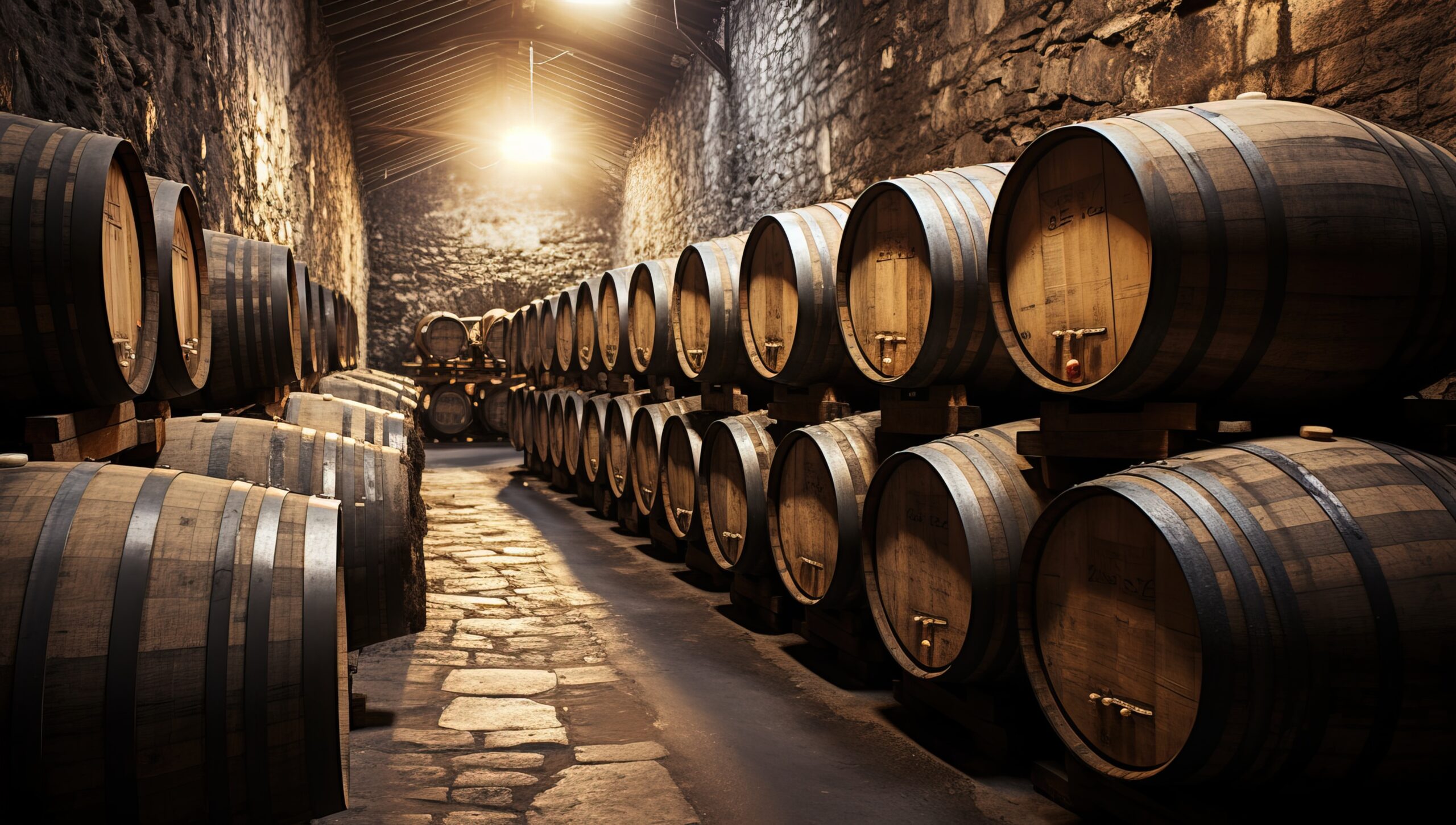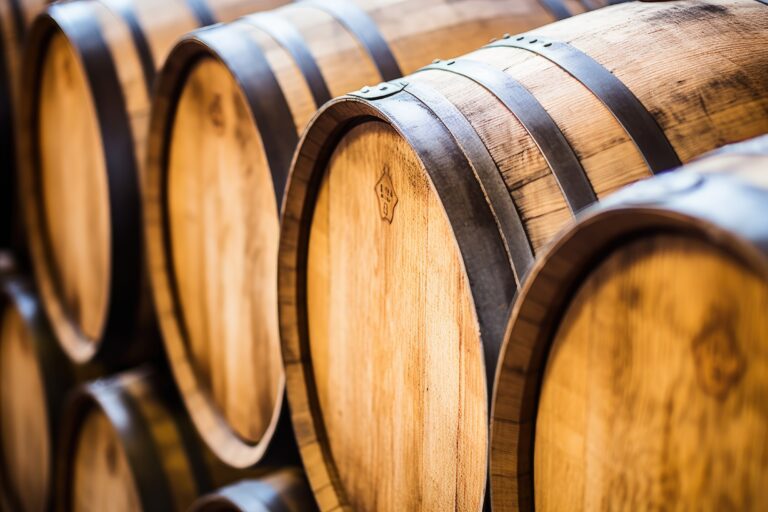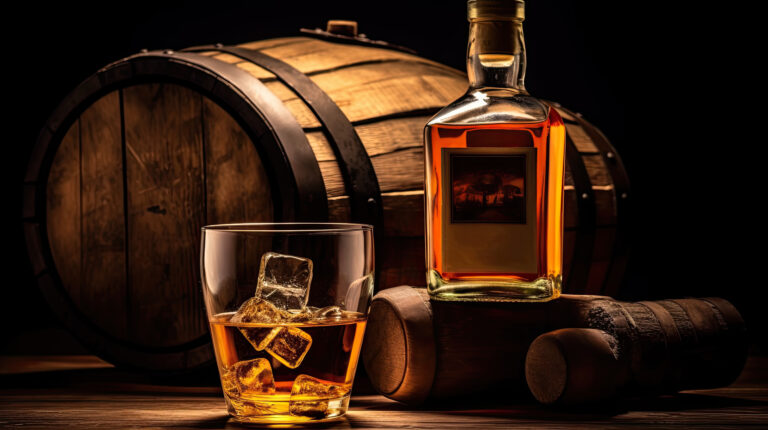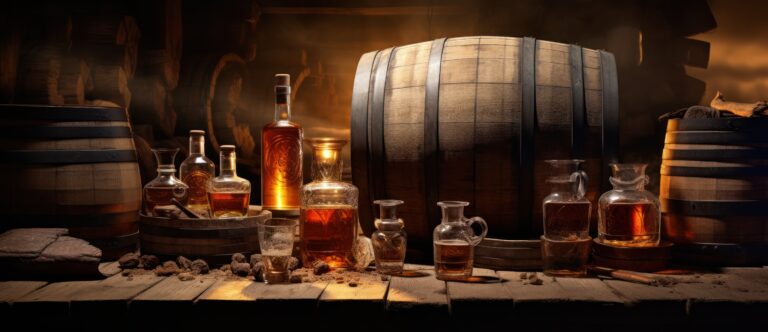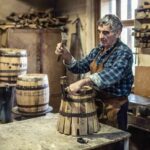Have you ever wondered about the journey your favorite whiskey takes before it reaches your glass? It’s fascinating to think about the oak barrels that play such a crucial role in shaping its character. While Scotland and Ireland might be synonymous with whiskey, a surprising number of those barrels actually come from the United States. If you enjoy bourbon, rye, or Scotch, you’ve likely tasted the influence of the oak. American white oak, in particular, is prized for its porous nature, which allows it to mellow and enhance the complex flavors of whiskey as it ages. Let’s delve into the world of whiskey barrels and discover where they’re made and what makes them so special.
The Craft of Barrel Making
The tradition of crafting barrels goes way back to the Roman Empire, where oak casks were used for transporting and storing wine. Over time, coopers honed their skills, adapting their craft to meet the needs of distillers and brewers.
In Scotland, it was discovered that aging distilled spirits in used sherry casks gave them a smoother, more refined flavor. This accidental discovery marked the beginning of whisky barrel aging.
American oak, with its porous wood and distinct vanilla notes, proved to be an ideal match for bourbon. In fact, bourbon law dictates that it must be aged in new, charred oak barrels, most often made from American white oak.
Each barrel is painstakingly handcrafted, and the inside is toasted to precise specifications, all in pursuit of the distiller’s desired flavor profile. The type of oak, the level of toasting, and whether the barrel has been used before all contribute to the final taste.
Most barrels are constructed from staves – narrow strips of oak – that are bent and bound together with metal hoops. The inside is then charred with fire, adding color and flavor to the spirit.
Today, while the techniques have remained largely unchanged for centuries, the demand for barrels is higher than ever due to the booming craft spirits industry. Coopers, with their time-honored skills passed down through generations, are essential to the world of whiskey, and their work has made the humble barrel a symbol of distilling tradition.
The Oak Trees Behind the Barrels
The two main types of oak used for whiskey barrels are American white oak (Quercus alba) and European oak (Quercus robur).
American white oak, primarily found in the eastern U.S. and Canada, imparts sweeter, vanilla-like notes to the whiskey. It’s the wood of choice for bourbon, which, as mentioned, must be aged in new, charred American white oak barrels.
European oak, more common in countries like France and Spain, tends to lend spicier flavors, such as clove and nutmeg. Many distillers use a combination of both American and European oak to achieve a balanced flavor profile.
The specific species of oak, where it grew, and the age of the tree all influence the barrel’s aroma and flavor. Older trees that grew slowly in cooler climates often produce barrels with more complex flavors. The density of the wood grain also affects how much liquid the barrel absorbs and releases during aging.
When the oak staves are cut and shaped, they’re exposed to oxygen, which starts a chemical reaction crucial for flavor development. The charring process further enhances this by caramelizing the wood sugars and creating distinctive flavor compounds.
The interaction between the whiskey and the wood during aging is what makes each barrel, and each batch of whiskey, unique. For distillers, choosing the right oak barrels is a true art.
American Oak vs. European Oak: What’s the Difference?
While both are used for aging whiskey, American and European oak barrels have some key differences that affect the final product.
- Toast Level: American oak barrels are typically toasted to a medium level, resulting in vanilla, caramel, and spice notes. European oak barrels are often more heavily toasted, leading to flavors of clove, nutmeg, and dark chocolate, as well as a darker amber color.
- Grain Tightness: American white oak has a tighter grain than European oak, which means less oxygen interaction with the whiskey. This often results in lighter, fruitier flavors. The looser grain of European oak allows for more oxidation, creating richer, darker flavors.
- Previous Use: Bourbon must be aged in new charred oak barrels, so American oak barrels are usually used only once. European oak barrels, on the other hand, are often reused after aging sherry or port, which imparts those flavors to the whiskey. This “sherry bomb” flavor is a common characteristic of some Scotch whiskies.
Many distillers use a combination of both types of barrels to create complex and layered whiskeys. The specific oak type, toast level, and previous use all play a role in the final taste.
American Whiskey Barrels: The Ozark Connection
The Ozark Mountains are renowned for their high-quality white oak, which is highly sought after for making whiskey barrels. The open grain of this oak allows the whiskey to penetrate deep into the wood, extracting flavor compounds like vanilla, spice, and caramel during aging.
Distillers source their white oak from forests in Missouri, Arkansas, and Kentucky. After the wood is cut into planks, it’s seasoned for at least six months to mellow and stabilize before being turned into barrels.
Coopers then shape the planks and char the insides, which not only gives the whiskey its amber color but also releases flavor compounds that infuse the spirit. The longer the whiskey ages, the more pronounced these oak flavors become.
Many believe that the tight grain and aromatic compounds of Ozark oak make it ideal for whiskey barrels. The unique climate and soil of the region contribute to the oak’s character, resulting in barrels that impart distinctive flavors to American whiskeys.
Irish Whiskey Barrels: A Spanish Influence
Irish whiskey often gets its unique flavor from aging in oak casks that previously held sherry from Spain.
These Spanish sherry casks, made from oak trees grown in northern Spain, have a tight grain that allows for just the right amount of oxygen interaction.
After aging sherry for several years, the casks are emptied and shipped to Ireland to give Irish whiskey a second life. The sherry-soaked wood imparts flavors of dried fruits, nuts, and spices.
The most common types of sherry casks used are oloroso and Pedro Ximénez (PX). Oloroso casks tend to add drier, nuttier notes, while PX casks contribute raisin-like and chocolatey flavors.
After maturing in these sherry casks for at least three years, the whiskey can be bottled as a single malt or blended with other whiskeys. The sherry cask influence is particularly noticeable in single malts, where it shapes the core flavors and aromas.
Scotch Whisky Barrels: The Legacy of Sherry
Like Irish whiskey, Scotch whisky often relies on sherry casks for its distinctive character. These casks, originally used to age sherry in Spain, are highly prized by Scotch distillers.
Sherry casks contribute flavors of dried fruits, vanilla, spice, and sometimes chocolate. Distilleries like Macallan, Glenfiddich, and Glenlivet are known for using sherry casks to age some of their whiskies.
While these casks can be reused multiple times, they eventually lose their flavoring ability. Some distilleries also use bourbon barrels, port casks, or wine casks to create different flavor profiles, but sherry casks remain a traditional and popular choice for Scotch.
Sherry casks are essential to the taste of Scotch whisky, and without them, it just wouldn’t be the same.
Japanese Whiskey Barrels: The Unique Mizunara Oak
Japanese whiskey producers often use mizunara oak barrels, a unique type of oak native to Japan.
Mizunara oak trees grow for hundreds of years before being harvested, and the resulting wood is porous, imparting flavors of coconut, cinnamon, and sandalwood to the whiskey. However, these barrels are difficult to make and maintain due to the oak’s low tannin levels and uneven grain, which can lead to leaks.
Despite these challenges, many Japanese distillers use mizunara oak barrels, with the Yamazaki Distillery being a pioneer in this area.
Mizunara oak barrels give Japanese whiskey a truly distinctive character, often described as reminiscent of incense used in Japanese temples.
Where Whiskey Barrels Are Made Today
Today, the US and Scotland are the major centers of whiskey barrel production. In the US, Kentucky is the heart of bourbon country, and major barrel producers include Independent Stave Company, Brown-Forman Cooperages, and Speyside Bourbon Cooperage.
In Scotland, cooperages like Speyside Cooperage and Kelvin Cooperage craft barrels for aging single malt Scotch. While American oak is more common for bourbon, European oak is often used for Scotch.
The barrel plays a vital role in determining a whiskey’s flavor, aroma, and color. The oak species, char level, barrel age, local climate, and barrel size and shape all contribute to the final product.
The Future of Whiskey Barrels: Sustainability and Innovation
The future of whiskey barrel making hinges on sustainability and innovation. As demand grows, coopers are looking for ways to source wood more responsibly and improve efficiency. Some are experimenting with alternative woods, like maple or chestnut, and others are reusing barrels more frequently.
New technologies, such as laser-guided cutting and toasting systems, are also being explored, though some worry that automation could diminish the traditional craftsmanship.
The whiskey industry is working towards a greener future through sustainable barrel management, balancing tradition with innovation.
Final Thoughts
From the American white oak of the Ozarks to the Spanish sherry casks of Ireland and Scotland, and the unique mizunara oak of Japan, the world of whiskey barrels is a fascinating one. Oak barrels, particularly those from the US and France, clearly have a dominant influence on the flavor and aroma of whiskey, but it’s exciting to see how other woods and regions are starting to play a larger role. Whether it’s the use of chestnut in Japan or acacia in Australia, there’s a growing sense of experimentation.
Ultimately, the barrel is an absolutely essential part of what makes whiskey so special. It imparts so much character even before the spirit leaves the distillery. Next time you’re enjoying a dram, take a moment to swirl it in your glass, breathe in the aromas, and consider the journey the whiskey has taken, shaped by the very wood it rested in. These barrels might be steeped in tradition, but they’re absolutely vital to the whiskey experience. So, go out there and explore the incredible world of whiskey, one sip at a time! Cheers!
